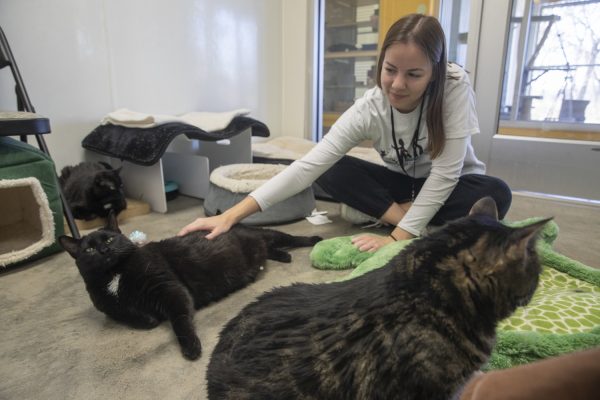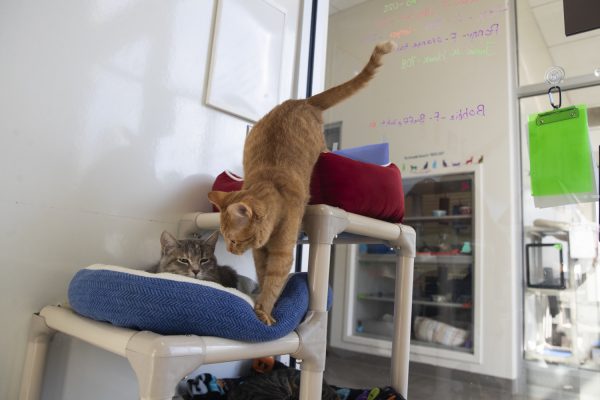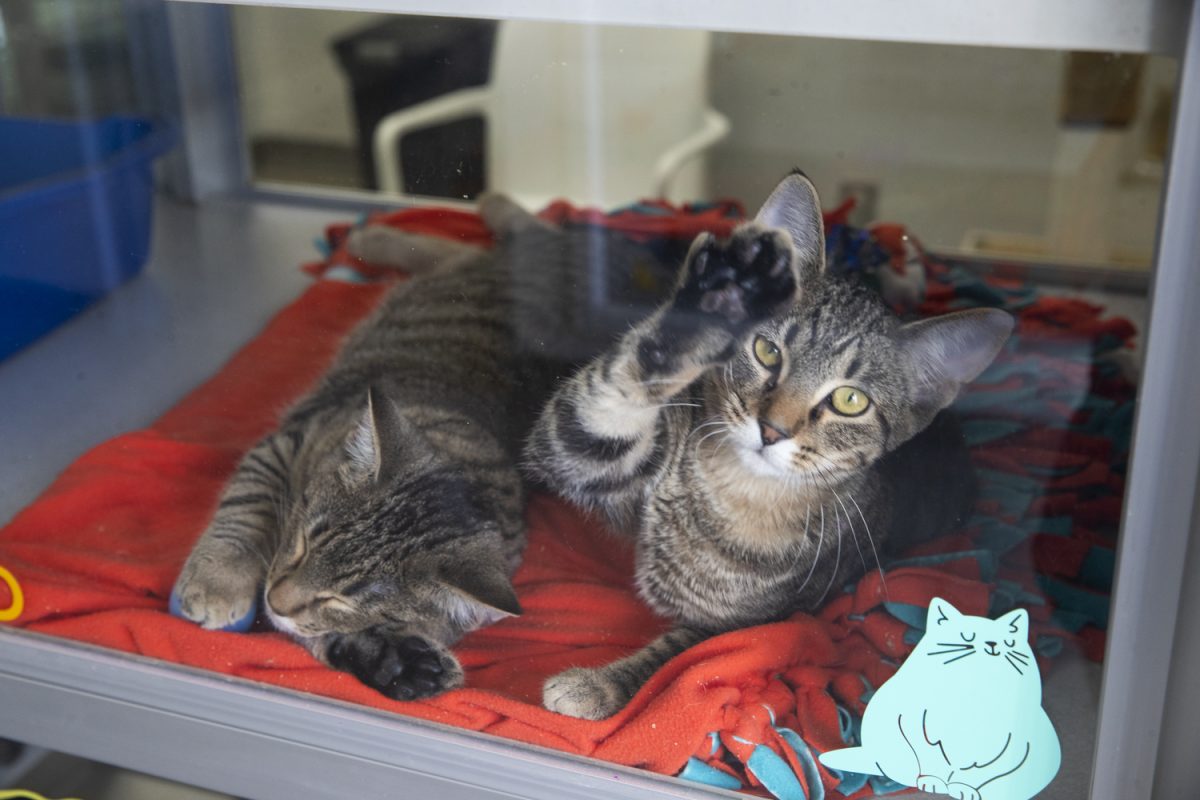Across the country, many stray or lost animals can be seen wandering the streets looking for scraps of food or shelter.
In many cases, these animals are rescued by good samaritans or Animal Control, who then place the animals in shelters or rescues.
According to the Roice-Hurst Humane Society, there are as many as 70 million strays throughout the U.S.
Of those, around 6.5 million end up in shelters or rescues across the nation.
Despite rescuing the animals from harsh conditions and life on the street, placing them in shelters or rescues can pose more challenges. Around Johnson County, shelters and rescues have continued to see an increase in stray or surrendered animals.
Currently, the Iowa City Animal Shelter and Adoption Center can house up to 25 dogs at a time, with it currently housing 22 dogs. With cats, it can house around 90 in the building, but that number has increased, with it currently having 110 in the building and 50 in foster care.
This increase can not only create a lack of resources and space but also pose a need for more adoptions and fosters.
Devon Strief, animal services coordinator at the Iowa City Animal Shelter and Adoption Center, discussed the shelter’s history, current capacity, and challenges due to increased animal intake.

The shelter has been serving the Iowa City community for many years, with it being in its current building since 2015.
In addition, the shelter is a division of the Iowa City Police Department, which places restrictions on where it can take animals from location-wise, Strief said.
The Iowa City Animal Shelter and Adoption Center has also faced significant challenges in the past.
Back in 2008, the shelter had a temporary building due to the historic flood that destroyed or damaged multiple structures in Iowa City.
Nonetheless, the Iowa City Animal Shelter and Adoption Center has continued to provide assistance and care for animals over the years.
Strief believes the increase in animals comes from a variety of reasons, including inflation.
“I think the biggest thing that we’re seeing is inflation, cost of veterinary care, cost of food for animals and people,” Strief said. “People have to make the decision: Am I going to feed my family, or am I going to feed my pets?”
The increase of animals not only puts a strain on the Iowa City Animal Shelter and Adoption Center and its resources but on the animals as well.
“The longer an animal is here, the harder it becomes on them,” Strief said.
Younger animals, such as puppies, need socialization and stimulation outside of their kennel, which creates a lack of opportunities they would otherwise have in a home.
Animal Services Officer Mara Stewart said she has noticed an increase in surrendered animals. She also said there have been more stray animals with collars, along with unclaimed microchipped animals.
“We definitely have seen an increase in people asking for food, litter, or other resources for their pets, or even asking to surrender them in general,” Stewart said.
President of the Johnson County Humane Society Tami Geyer spoke on how the nonprofit organization is aiding in ending animal overpopulation.

RELATED: DITV: Iowa City Animal Shelter Overflowed with Animals
“While there hasn’t been a significant increase in the number of free-roaming cats, there has been a rise in unwanted litters, both from owned pets and community cats,” Geyer said. “This strain on resources can lead to overcrowded municipal shelters and increased rates of euthanasia.”
The Johnson County Humane Society became a nonprofit organization in 1982, and since the beginning, it has been dedicated to reducing overpopulation through a program called Trap-Neuter-Return.
“We’re also working towards a mobile spay and neuter clinic, ‘Project Litter Quitter,’ which would travel to high-need areas and sterilize cats in just one or two days,” Geyer said.
The Johnson County Humane Society also supports owners who cannot afford sterilization through the Florence Unash Neuter Fund, which helps to ensure more animals are spayed or neutered.
In addition, the Johnson County Humane Society has offered other sheltering services while playing a key role in changing the way people view community cats and collaborating with local governments to enact laws that protect them.
During these times, the community can assist the shelters and rescues facing these increases by donating, volunteering, or fostering animals, Strief said.
In addition, Strief said the Iowa City Animal Shelter and Adoption Center will continue to take in animals and provide them with the care they require.
“We’re doing the best we can because we’re an open admission shelter,” Strief said. “If somebody walks in with a stray animal from within our jurisdiction, I can’t turn them away just because we don’t have space.”



